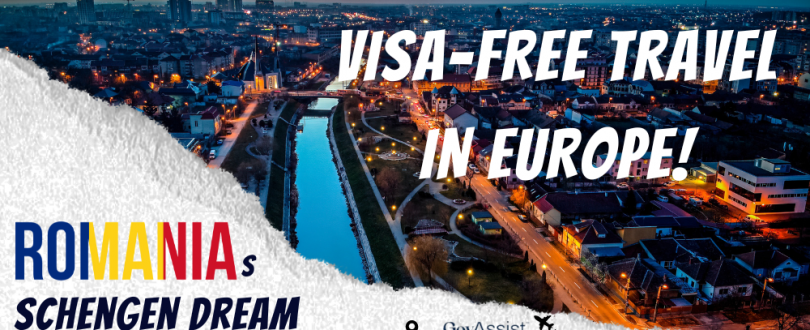
Romania’s 2024 Schengen Dream: A New Era of Visa-Free European Travel.
Romania is on the cusp of a historic moment – joining the Schengen Area. This milestone represents more than just simplified travel; it’s a significant step in Romania’s European integration and a game-changer for travelers across the continent.
Understanding the Schengen Area
The Schengen Area represents a significant achievement in European integration, embodying the principle of free movement. It’s a zone where internal border checks have largely been abolished, allowing for passport-free travel across member countries. This area encompasses most EU states along with several non-EU countries, facilitating ease of movement for millions of Europeans. Romania’s inclusion in this area marks a milestone in its integration into broader European frameworks, signifying a notable shift in travel dynamics within the continent.
The Benefits of Visa-Free Travel
Visa-free travel within the Schengen Area offers numerous benefits. For Romanian citizens, it would mean hassle-free travel across member states, enhancing personal and business travel opportunities. For the area itself, Romania’s inclusion could boost tourism, allowing travelers to move freely into and out of Romania without the need for multiple visas. This ease of movement is expected to have a positive impact on cultural exchange, business collaborations, and the overall economic landscape of the region.
The Road to Schengen Membership
Romania’s journey towards Schengen membership has been a long and complex process. Since joining the EU in 2007, Romania has been working towards aligning its policies and systems with Schengen standards, which include stringent border control, visa, and data protection regulations. Despite various challenges and delays, Romania has made significant strides in meeting these requirements. Its anticipated entry into the Schengen Area is not just a testament to these efforts but also a reflection of the EU’s ongoing commitment to enlargement and integration.
What Changes for Travelers?
With Romania’s entry into the Schengen Area, travelers will experience significant changes:
- Border Control Adjustments: At air and sea borders with other Schengen countries, passport controls for travelers will be eliminated, streamlining entry and exit.
- Land Border Regulations: However, for land borders, passport checks may still be required, pending further integration and policy alignment.
- Ease of Movement: Overall, travelers will enjoy easier movement within the Schengen zone, facilitating tourism and business travel.
Economic and Cultural Implications
Romania’s Schengen membership is expected to have profound economic and cultural impacts:
- Boost in Tourism and Trade: Easier travel can lead to increased tourism and business opportunities, potentially boosting the Romanian economy.
- Cultural Exchange: This integration fosters greater cultural exchange, enriching the diversity and cultural richness within the Schengen Area.
Looking Ahead – Romania’s Future in the Schengen Area
As Romania stands on the brink of Schengen membership, its future looks promising:
- Continued Growth: Expected to benefit from increased travel and economic collaboration, Romania’s integration signifies a key step in its European journey.
- Challenges and Adaptation: The country will face challenges in adapting to the new system and aligning with Schengen policies, but the prospects for growth and development are significant.
Romania’s imminent Schengen membership marks a new era in European travel. It stands as a testament to Romania’s growth and its pivotal role in the European community.

